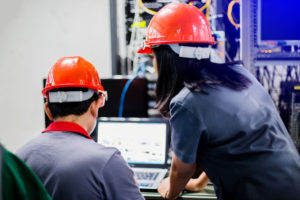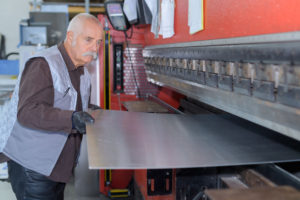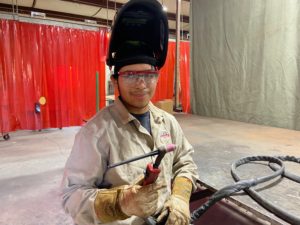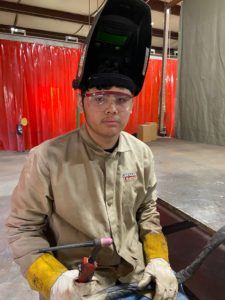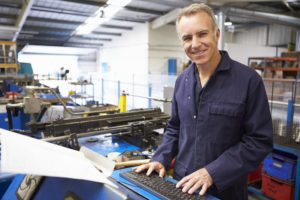Laser cutting gives you the ability to create intricate cuts in metals like stainless steel and aluminum. In addition to precision, the computer guidance system found within a laser cutting system means you can perform the same cut repeatedly at high speeds.
Laser Cutters
There are two types of laser cutters used by the industry: CO2 lasers and fiber lasers. While CO2 lasers were the standard equipment for many years, they tend to be inefficient for cutting metal, as the material absorbs much of the heat.
In contrast, fiber lasers have a shorter wavelength, allowing for sharper cuts due to a narrower kerf.
How Lasers Cut Metal
Laser cutters work by focusing a high-intensity light beam into a very narrow point. The laser beam begins at a diameter of about ¾” and ends at a cutting diameter of about 0.008”. It is reflected from mirror to mirror to direct the beam towards a focusing lens or a curved mirror, depending on your specific laser cutter.
Once the beam hits the focusing device, it passes through a nozzle that helps to channel a flow of laser-cutting gas, which is usually compressed nitrogen or oxygen.
As the beam hits the metal, it quickly heats the surface, melting or vaporizing the metal. With oxygen, the cutting process is much faster, but it produces more slag on the sides of the cut. Nitrogen slows down the cutting process but results in much smoother cuts.
CNC Laser Cutters
With CNC laser cutters, a computer controls the path of the laser cutting, allowing you to create intricate patterns quickly and easily. You simply create a CAD/CAM file, which is then programmed into the cutting software. This program then cuts the piece automatically. This process can be repeated as often as necessary.
Laser cutting is a quick, efficient way to create custom metal components. Amtex Precision has the equipment and training to tackle any metal fabrication project. Contact us today to learn more!

